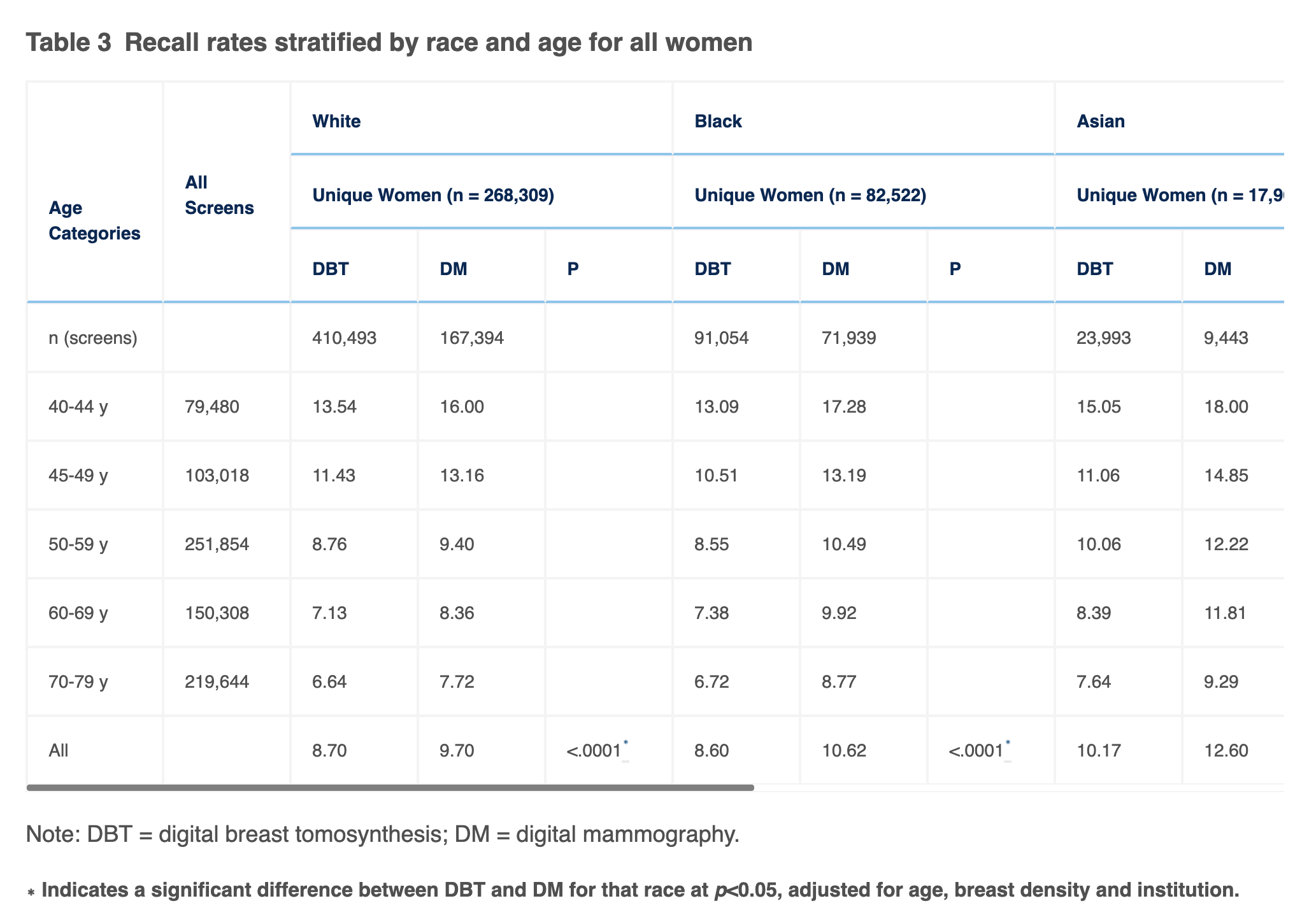STUDY POINTS TO RACIAL INEQUITIES IN mammographic utilization
STUDY POINTS TO RACIAL INEQUITIES IN mammographic utilization
Digital breast tomosynthesis (DBT) in conjunction with digital mammography (DM) is becoming the preferred imaging modality for breast cancer screening compared with DM alone on the basis of improved recall rates and cancer detection rates. The goal of a recent study published in the Journal of the American College of Radiology (JACR) was to investigate racial differences in the utilization and performance of screening modality.
Methodology and racial makeup of screened women
Retrospective data from 63 US breast imaging facilities from 2015 to 2019 were reviewed. Screening outcomes were linked to cancer registries. Recall rates, cancer detection rates per 1,000 examinations, and positive predictive value for recall (cancers/recalled patients) were compared. A total of 385,503 women contributed 542,945 DBT and 261,359 DM screens to the study.

Black women compared to women of other races were less like to receive DBT
A lower proportion of screenings for Black women were performed using DBT plus DM (referred to as DBT) (44% for Black, 48% for other, 63% for Asian, and 61% for White).

Non-White women were less likely to undergo more than one mammographic examination
Recall rates were lower for DBT among all women (8.74 versus 10.06,P< .05) and lower across all races and within age categories. Recall rates were significantly higher for women with only one mammogram.

The Hologic Global Women's Health Index: the first globally comparative study of women’s health
On March 8th, 2021, International Women’s Day 2021, Hologic announced its Global Women's Health Index. The study, conducted in partnership with Gallup, has collected data from 120,000 women and men across 116 countries speaking 40+ languages. Watch for the global release of the findings over the coming months.

